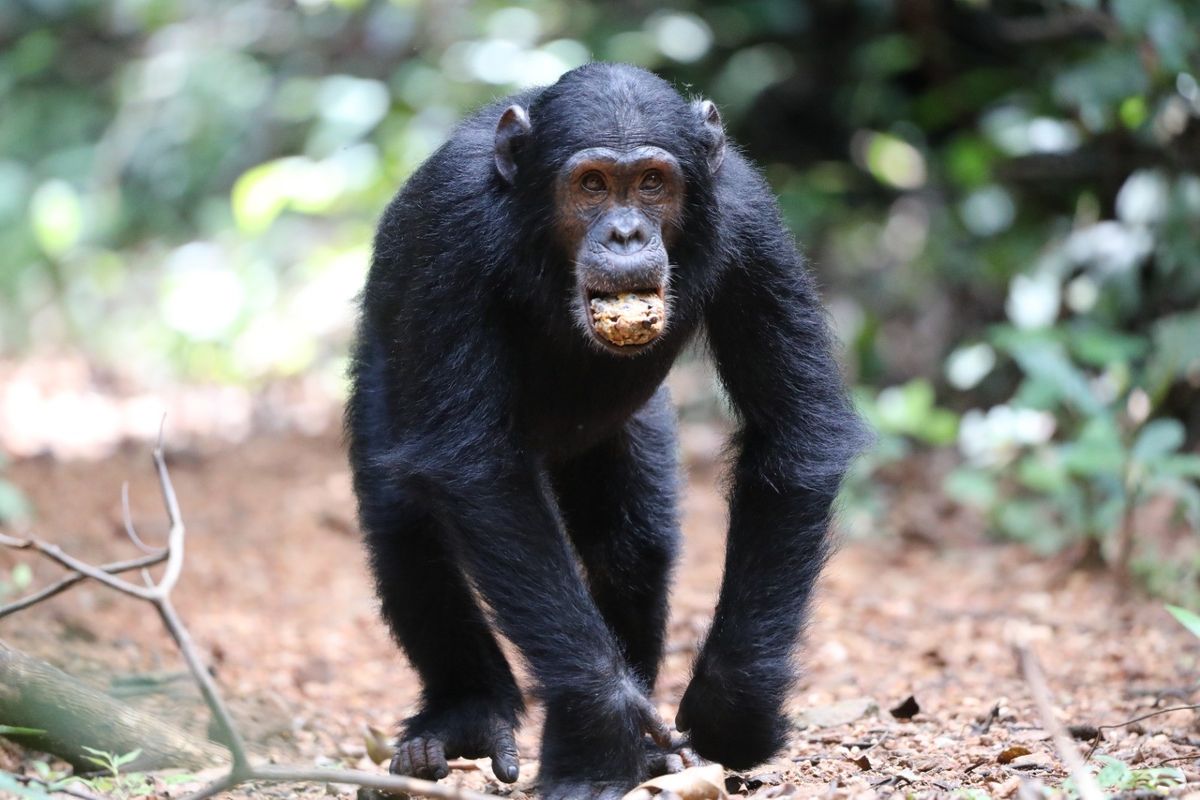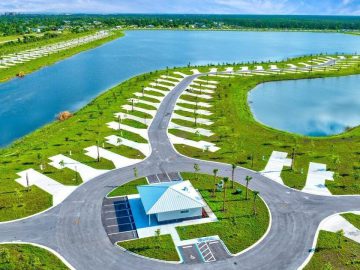Tanzania, known for its dedication to conservation, has allocated nearly one-third of its 945,087-square-kilometre area to be conserved, distinguishing itself as a global leader in nature preservation. Despite this commitment, the journey is fraught with challenges, as many local communities remain reluctant to engage in conservation efforts.
The remnants of colonial regimes’ harsh methods still linger, fostering a sense of hostility towards conservation initiatives. Coupled with the growing demand for land, and overpopulation, these factors exacerbate human-wildlife conflicts, leading some communities to challenge conservationists for prioritizing nature over human needs.
Over three decades ago, Dr. Jane Goodall, renowned primate advocate, faced a new challenge as the chimpanzee habitat in Gombe was under increasing threat.
This spurred her to conceive the Lake Tanganyika Catchment Reforestation and Education (TACARE) program, envisioning a sustainable future where chimpanzee conservation was intertwined with empowering local communities as leaders and stewards of their lands.
According to Jane Goodall Institute (JGI), Tanzania is home to 2,200 chimpanzees, with at least 60 per cent of them facing pressure from a poverty-stricken human population. Habitat fragmentation due to illegal logging, settlement expansion, overgrazing, charcoal burning, and conversion of forest to farmland poses significant threats to chimpanzees and other wildlife, while also contributing to climate change.

Habitat fragmentation due to illegal logging, settlement expansion, overgrazing, charcoal burning, and conversion of forest to farmland poses significant threats to chimpanzees and other wildlife. Photo | Stephano Lihedule.
The JGI Approach: Community-Centered Conservation
In response, in the early 1990s the Jane Goodall Institute (JGI) adopted an approach to conservation by working through the community. This community-centered approach engaged smallholder farmers in sustainable practices such as agroforestry, contour farming, and compost manure application, by which JGI aimed to balance the needs of both chimpanzees and local communities.
Dr. Shadrack Kamenya, JGI Tanzania’s Conservation Science Director, recalls that farmers previously cleared riverine forests for short-term agricultural gains, leading to loss of soil fertility which drove further deforestation. However, interventions like the USAID Landscape Conservation in Western Tanzania initiative, funded with $20 million from USAID, have shown promising results.
Training in sustainable farming practices has significantly boosted agricultural yields. Farmers reported harvests up to 200 percent higher after applying compost manure, which retained water even during dry spells.
This project spanned 74 villages in Kigoma and Katavi regions capturing such areas as the refugee settlements of Mishamo and Katumba, addressing issues such as natural resources governance, family planning and reproductive health education, gender equity and social inclusion, land use planning, environmental conservation education for children, and behavior change campaign grounded in composting to reduce the impact of shifting farming in the riverine areas of the landscape.
JGI’s integrative approach not only reduced deforestation by 60 percent but also benefited 253,000 people through sustainable natural resource management. Achievements include the conservation of 1.8 million hectares of land, supporting Uvinza and Tanganyika district councils to establish two local authority forest reserves, and creation of Community Conservation Banks (COCOBA groups), which by the end of 2023 had over 9,000 members who had mobilized over Tsh.1.2 billion shillings as source of cheap loans for running environmentally friendly micro enterprises.
TACARE’s Role in Conservation and Community Empowerment
The TACARE program, initiated by Dr. Jane Goodall in 1994, highlights the importance of empowering local communities to conserve the natural resources on which they depend. The program focuses on engaging communities in sustainable practices, ensuring that conservation efforts are both inclusive and effective. Now, Tacare is considered by JGI as a model for community-led conservation initiatives conducted by the Jane Goodall institute.
In addition to promoting agroforestry and composting, through the Tacare model, JGI emphasizes the significance of gender equity and social Inclusion, Family planning and reproductive health. These components are crucial for fostering community support and ensuring that all members, regardless of gender, can participate in and benefit from conservation initiatives.
Dr. Kamenya explains: “Smallholder farmers cleared the riverine forests to grow crops but within three years soil fertility was lost, compelling them to clear other tracts of forest.”
USAID Landscape Conservation in Western Tanzania Initiative
In November 2018, JGI piloted an integrated the USAID Landscape Conservation in Western Tanzania initiative, with about $20 million in funding from the United States Agency for International Development (USAID). This initiative aimed to protect chimpanzees and their habitats in the Greater Gombe-Masito-Ugalla ecosystem and help communities adapt to the impacts of climate change by improving their livelihoods.
The USAID Landscape Conservation in Western Tanzania initiative has empowered communities, local authorities, and other conservation players to implement sustainability measures and climate change adaptations while maintaining a hands-off approach.
High priority on the five-year drive was training smallholder farmers to apply compost through a robust social marketing theatre-driven behavior change campaign sloganed, ‘Tunza Udongo, Tunza Familia, Tunza Mazingira’ (with literal translation ‘Care for the soil, Care for the Family, Care for the Environment’) to improve soil fertility management so as to discourage shifting agriculture from further fragmenting the chimpanzees’ habitat in the landscape.

Extension Service Agent, Tanganyika District Council, Katavi Region Ramadhan Shiganza speaks at the meeting with the communities surrounding the Gombe National Park. Photo | Michael Pandisha.
Unlike costly and soil-damaging artificial fertilizers, compost manure comprises all the essential elements for crop growth, namely Nitrogen, Phosphorus, and Potassium (NPK), and can last long in the farm, being applied only once to support crop growth and farmers can produce it using locally available materials.
Results so far have been promising, with compost manure retaining water even during dry spells in the once-infertile farms, enabling farmers to harvest between 100 percent and 200 percent more than they did before applying the manure.
Dr. Kamenya adds: “Village nursery attendants have even been setting goals for their own thriving seedlings business with minimum supervision from the JGI and district council’s experts.”
The substantial progress made has encouraged USAID to sign a cooperative agreement with JGI-Tanzania for a follow-on worth $29.5 million, the USAID Hope through Action project, aiming to deepen and expand conservation efforts to 104 villages and by intensifying climate-smart agricultural practices with a gender lens.
Community Involvement and Sustainable Practices
The integrative drive covers 74 villages in four district councils of Kigoma and Katavi region and addition of 30 villages in Mishamo and Katumba settlements in Tanganyika and Mpanda districts in Katavi region, incorporated an array of crosscutting areas in addition to intensification of women led climate smart agriculture, including Climate Change Adaptation, Gender Equity and Social Inclusion, Data Science and Knowledge Management and Inspiring Communication through Storytelling.
An important element of the program is land use planning, whereby each village had established its own agricultural zone to limit shifting cultivation. A typical village land use plan, valued at least at Sh19 million, demarcates zones earmarked for settlement, for farming, for conservation as village land forest reserve, and for other uses as the community decides.
Conservationists advised villagers not only to plant and tend new tree seedlings but also to let old stumps of the clear-felled miombo woodland sprout for the natural forest to regenerate. Health, gender, and equity experts from district councils in the project area counseled villagers to keep manageable family size and to discard stereotypes inhibiting women and youth from effectively contributing to the conservation agenda.
JGI Tanzania Communications and Storytelling lead, Robert Mkosamali notes: “Studies show the interventions and adaptation measures for climate change have, reduced encroachment on the chimpanzees’ habitat, with deforestation of the riverine forests declining by 60 percent.”
Positive Outcomes and Future Prospects
On the other hand, about 253,000 people have benefited from sustainable natural resource management and biodiversity conservation in the ecosystem. As we speak, more than 1.8 million hectares in the landscape are conserved, and two forest reserves spanning 521,000 hectares belonging to Uvinza and Tanganyika District Councils, namely Masito Local Authority Forest Reserve and Tongwe West Local Authority Forest Reserve, respectively, were gazzetted by the district councils through the facilitation of the Jane Goodall Institute and the generous funding of the American people through the United States Agency for International Development (USAID).

Sunuka Village Compost Farmer Ms Hilda Joel (left) speaks with the Kigoma Regional Commissioner, Thobias Andengenye (right) who takes a look at her compost products made out of nature. Photo | Michael Pandisha.
Naturalized communities at Mishamo and Katumba settlements have teamed up into 172 Community Conservation Bank (COCOBA) groups, with 3,128 members, 1,312 being males and 1,681 females. 250 community health workers have been trained in providing family planning services, more than 21,000 (10,076 males, 11,042 female) students are engaging in environmental education in over 244 school clubs scattered around the landscape.
Village nursery attendants, and village forest monitors, have been recruited to ensure forest reserves remain intact, and by-law defaulters are kept at bay.
All 74 villages in the project area boast having conservation land use plans, and the chimpanzees’ transboundary freedom is being restored along the Gombe-Burundi wildlife corridor. Supported by the project, Tanzania Meteorological Authority has installed three weather stations at Kakoso Secondary School in Mpanda Township, Lugufu area in Uvinza District, and at Kalinzi area in Kigoma District to monitor weather across the landscape. The weather information is crucial for the intensification of climate smart agriculture practices in the landscape.
Addressing Challenges and Future Plans
The interventions and adaptations measures implemented have not only maintained the chimpanzees’ population in the landscape but have reduced the local extinction rate of the primates. Many factors contribute to the extinction of chimpanzees globally, including diseases. When a hunter armed with a dog intrudes into a chimpanzees’ habitat, for instance, the chance for the primates to catch and die of the flu or any other zoonotic diseases is high.
Also limiting the growth of the chimpanzees’ population is the low birth rate of the primates. “When a chimpanzee dies, it is hard to replace it, as only one baby is born in four to five years birth interval, just like humans, and very few chimpanzees give birth to twins,” Dr. Kamenya explains.
However, the achievements so far accrued have prompted players in the pilot drive to roll out USAID Hope through Action – a fully-fledged project which aims at deepening the gains of the USAID Landscape Conservation in Western Tanzania and expanding conservation coverage within 104 villages, with USAID providing $29.5 million core funding for the project.
“We are in the process of identifying an agricultural partner to bring a package of women focused climate-smart technologies in a bid to boost production in the village agricultural zones, facilitate market linkages and connecting farmers to commercial banks for small loans,” Dr. Kamenya explains.
Tanzanian villages near carbon offset breakthrough
Twenty-seven villages in western Tanzania are on the verge of benefiting from over two decades of forest conservation efforts. The villages and their district councils are in the final stages of securing a lucrative carbon offset deal with Carbon Tanzania.
Experts from the Uvinza and Tanganyika district councils in Kigoma and Katavi regions, along with representatives from the Jane Goodall Institute (JGI) Tanzania and Carbon Tanzania, have developed a management plan for the Masito and Tongwe West Local Authority Forest Reserves.
Spanning more than 521,000 hectares of forested land. These forest reserves have been assessed to determine their carbon stocks and to identify measures to enhance their capacity to sequester additional greenhouse gases.
Carbon dioxide, accounting for 76 per cent of global greenhouse gas emissions, traps heat in the atmosphere, leading to changes in temperature, humidity, and rainfall patterns. Forests play a crucial role in absorbing these gases through photosynthesis, producing energy, and releasing oxygen. Conserving forests is a natural solution to achieving Climate Change goals, as trees can remove 37 per cent of heat-trapping gases from the atmosphere.
The Uvinza and Tanganyika district councils are set to enter into a joint forest management agreement with the 27 village government councils for the management of the Masito and Tongwe West local authority forest reserves, preceding the carbon offset deal. A contract with Carbon Tanzania, an enterprise that invests in certified nature-based solutions for protecting landscapes, flora, fauna, people, and the climate, will follow.
Carbon Tanzania currently implements projects such as Yaeda-Eyasi Landscape, Makame Savannah, and Ntakata Mountain, protecting forests for indigenous people, pastoralists, farmers, wildlife, and the climate. In the Masito and Tongwe West local authority forest reserves, the investor in carbon credits will apply the Reducing Emissions from Deforestation and forest Degradation (REDD) framework to promote sustainable forest management.
The REDD framework, established by the United Nations Framework Convention on Climate Change (UNFCCC), certifies voluntary nature-based projects that reduce, avoid, or remove greenhouse gas emissions.
“The framework will allow the district and village government councils to earn revenues in return for measurable and verifiable forest protection activities overseen by Carbon Tanzania,” says Aristides Kashula, JGI’s long-serving Forest Officer.
The Vice President’s Office, responsible for environmental matters, will determine the revenue-sharing ratio between the district and village government councils. The councils are expected to generate significantly more revenue than they currently do, but this comes with responsibilities.
Each village must form a robust natural forest management committee to oversee the forest reserves, including patrolling to prevent wildfires, stray livestock, illegal settlers, and poachers. Over the past five years, the district and village councils have played similar roles while implementing the wider USAID Landscape Conservation in Western Tanzania project with JGI Tanzania and other conservation players.
Since 2018, JGI, under the auspices of USAID, has trained the district and village councils in natural resource governance. “We conducted joint forest patrols quarterly, with JGI covering costs for vehicles, fuel, and allowances,” admits Bruno Mwaisaka, the Tanganyika District Council’s Natural Resources Officer.
Joint research conducted by the councils and JGI identified threats to chimpanzees and reviewed village land use plans. “We have collaborated with JGI to educate villagers on reproductive health, organic farming, good governance, rights and equality, and the rule of law,” says Sigunga Village Executive Officer Alfonsina Tambo.
Separate meetings were held for youth, women, men, and special needs groups to voice their concerns, with reports presented at village assemblies to find lasting solutions.
However, politically motivated challenges arose during elections, as leaders feared enforcing village by-laws might cost those votes. Herders from neighboring regions bribed leaders to graze in conservation zones, and refugees from war-torn countries cleared forests.
Despite these challenges, community members acknowledge the benefits of the USAID Landscape Conservation in Western Tanzania project. Organic farming knowledge has reduced women’s reliance on diminishing fisheries from Lake Tanganyika. “Compost manure has increased maize yields significantly, reducing women’s dependence on the lake,” says Tambo.
Two Community Cooperative Banks (COCOBAs) groups with 55 members have generated income by collecting and selling mushrooms from the forest reserves. JGI provided an 80 per cent subsidy for a solar dryer worth Sh680, 000 to help season and package the mushrooms for sale.
“The groups will continue collecting wild mushrooms to meet customer preferences,” says Neema Elias, a COCOBA group leader in Katumba settlement in Katavi.

Community Forest Agent (fourth right) explains about land use management to the USAID Deputy Chief of Mission Robert A. Rcelues (fifth right) and community dwellers. Photo | Michael Pandisha.
Athumani Makana, who began beekeeping in 2005, has benefited from the conservation project. Learning that artificial fertilizers and pesticides contaminated honey, he now uses 2,000 modern bee hives and 300 owned by his wife in the forest reserves, producing at least 6,000 liters of pure honey each season. Upendo Honey buys this unpolluted honey at Sh3, 500 per kilogram, providing a significant income boost.
“Beekeeping pays off and changes lives,” says Makana, who now owns a home, a motorcycle, a chain of grinding mills, and plans to buy a vehicle and build rental apartments. The beekeeping market is serving 43 groups of beekeepers with a total membership of 597 (476 males, 121 females) in the landscape among whom 125 are young male members.
This collaborative conservation effort promises a brighter future for the villages involved, showcasing the profound impact of sustainable natural resources management on local communities.
USAID and JGI Partnership for Community-Centered Conservation
What is the focus of the partnership between USAID and JGI?
Jason: Protecting wildlife and empowering people. In 2018, we began a five-year, $20 million project, USAID Landscape Conservation in Western Tanzania.
It protected chimpanzee populations and their habitats, and empowered local communities. In 2023, the United States launched a $30 million program with JGI/Tanzania, USAID Tumaini Kupitia Vitendo (Hope Through Action).
Robin: I want to mention this is a long-term commitment. USAID began an environmental resource management program in the 1990s, the same time Jane Goodall noticed Gombe’s rapid deforestation. I mean, this happened before even Fei Toto was born. Long term.
In 2003, we partnered up and introduced communities to sustainable agricultural techniques. Then we expanded. We taught children eco-practices. We increased the amount of land under conservation through community-led land use planning. We restored chimpanzee habitats.
Why does the USAID and JGI partnership emphasize working with villages instead of concentrating solely on the Gombe Park areas reserved for chimpanzees?
Jason: Chimpanzees live in forests outside of Gombe. We work with communities that live near those areas, so they can protect wildlife while benefiting from nature.
Robin: Plus, communities near Gombe derive income from conservation efforts. As our USAID Mission Director Craig Hart says, local governance is at the heart of this partnership.
What achievements are USAID and JGI most proud of in their partnership spanning over two decades?
Robin: How we benefit the people and the environment, and show people how they benefit from a healthy ecosystem. Some stats: Nearly 253,000 people improved their incomes. Two local authority forest reserves now exist, 74 villages developed and implemented land use plans. We reached young people by establishing 244 environmental school clubs.
Jason: And data JGI collected shows USAID investment helped reduce the deforestation rate 55 to 60 percent.
What role do local authorities play in this partnership, and how well are they performing?
Jason: Local authorities are key. Outside of the nationally managed Gombe National Park, districts and local villages manage the land. Villages develop land-use plans in collaboration with district and national authorities to ensure coordination.
Robin: USAID also directly funded JGI’s Tanzania branch, showing commitment to locally-led development.
What new initiatives will the Hope through Action project introduce that were not part of the Landscape Conservation in Western Tanzania initiative?
Jason: The project includes items about gender, agriculture, and climate change. The project also supports efforts to better collect and utilize data.
How has the ‘gender lens’ helped overcome stereotypes and barriers to community-centered conservation?
Robin: Women face obstacles to take part in decision-making. By supporting inclusive decision-making, women have a greater, and hopefully equal, say in decisions. Equal access is critical to Tanzania’s continued economic advancement.
Jason: By including women and youth in decision-making processes, leaders address the groups’ concerns and grow from the ideas, which improves the economic status of the entire community. When women cannot participate, we leave behind the expertise of 50 percent of the population.
Are there plans to apply the JGI community-centered approach to other ecosystems facing similar challenges?
Jason: JGI pioneered a community-centered approach to conservation in Tanzania with its Lake Tanganyika Catchment Reforestation and Education program. USAID’s conservation programs in Tanzania include community-based decision-making as a foundational concept.
Robin: For example, the USAID Heshimu Bahari (Respect the Ocean) project strengthens community-led management of critical fish habitats, and the USAID Resilient Community Governance Project builds communities’ capacity to hold institutions accountable for community and environmental needs. Americans and Tanzanians share a desire for local input – their input – on programs in their communities. USAID promotes local input in Tanzania. Jason Ko works as a senior environment advisor at USAID/Tanzania.
Robin Holzhauer is the deputy development outreach and communications advisor for USAID/Tanzania.





